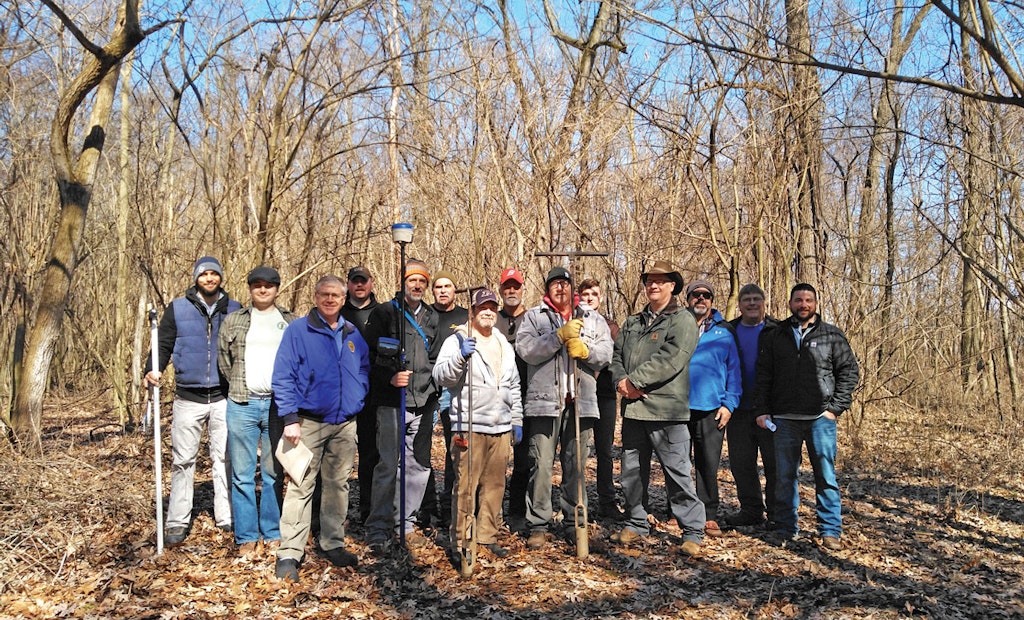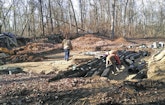
On the first day of the Camp Millhouse project, this was the group who came out to volunteer or, in the case of public officials, provide guidance. From left are Kevin Hinkle, Meade Septic Design; Brett Davis, environmental health assistant director, St. Joseph County; Manass Hochstetler, Advanced Home Inspections of Elkhart County; Cody Houseknecht, Sunset Septic & Excavating; Stuart Meade, Meade Septic Design; Jon Houseknecht, Sunset Septic & Excavating; Don Schnoebelen, Schnoebelen Soil Consulting; L.A. Brown, L.A. Brown Co.; Tim Monaghan, Soil Solutions; Micha Gilly, L.A. Brown Co.; Dave Ortel, Indiana State Department of Health; Matt Johnson, Infiltrator Water Technologies; Doug Williamson, Indiana State Department of Health; and Greg Inman, Infiltrator Water Technologies.
Every year, the Indiana Onsite Wastewater Professionals Association completes a charity project. They pick a person or organization that would have a hard time affording onsite work, and they do the job for free.
In 2020, IOWPA members worked for Camp Millhouse, an 84-year-old...









